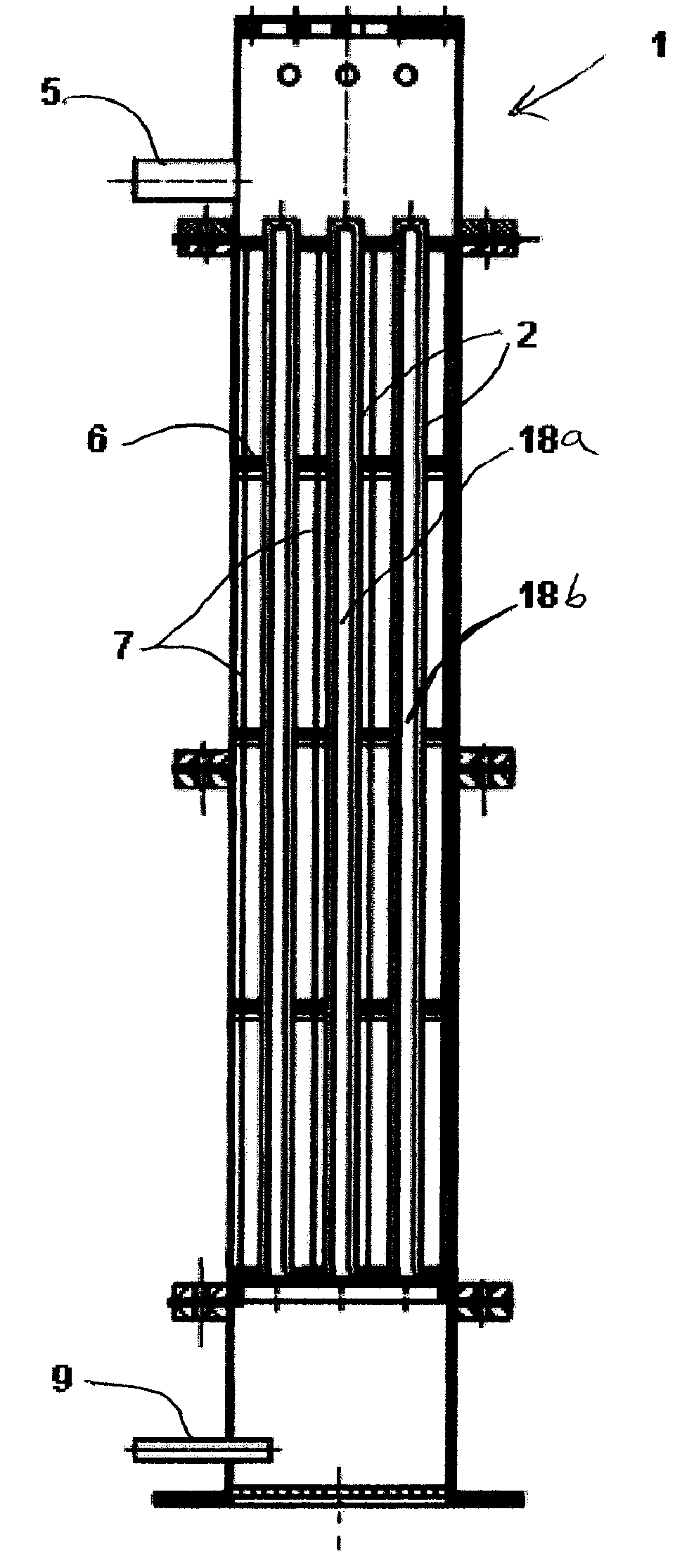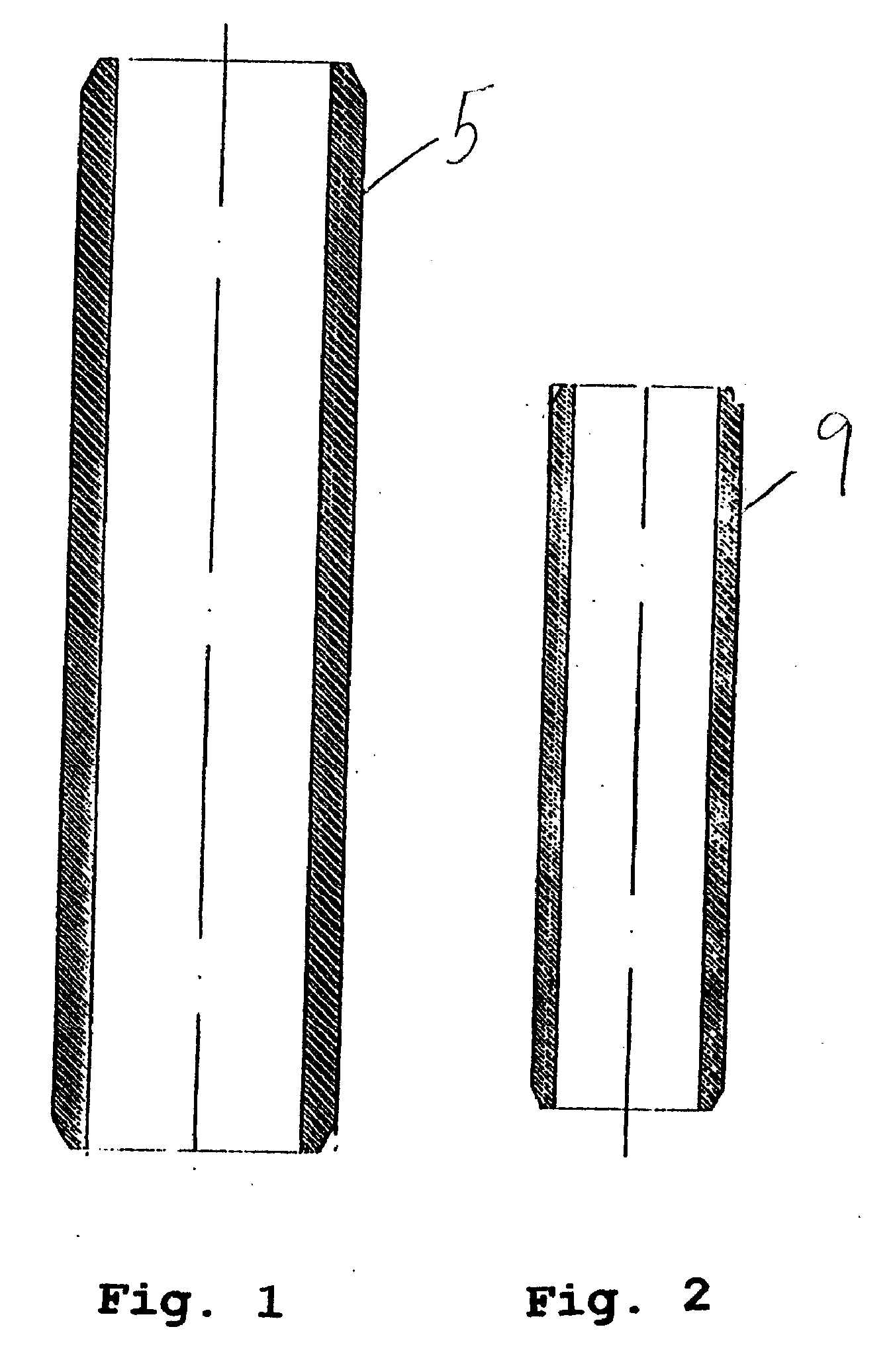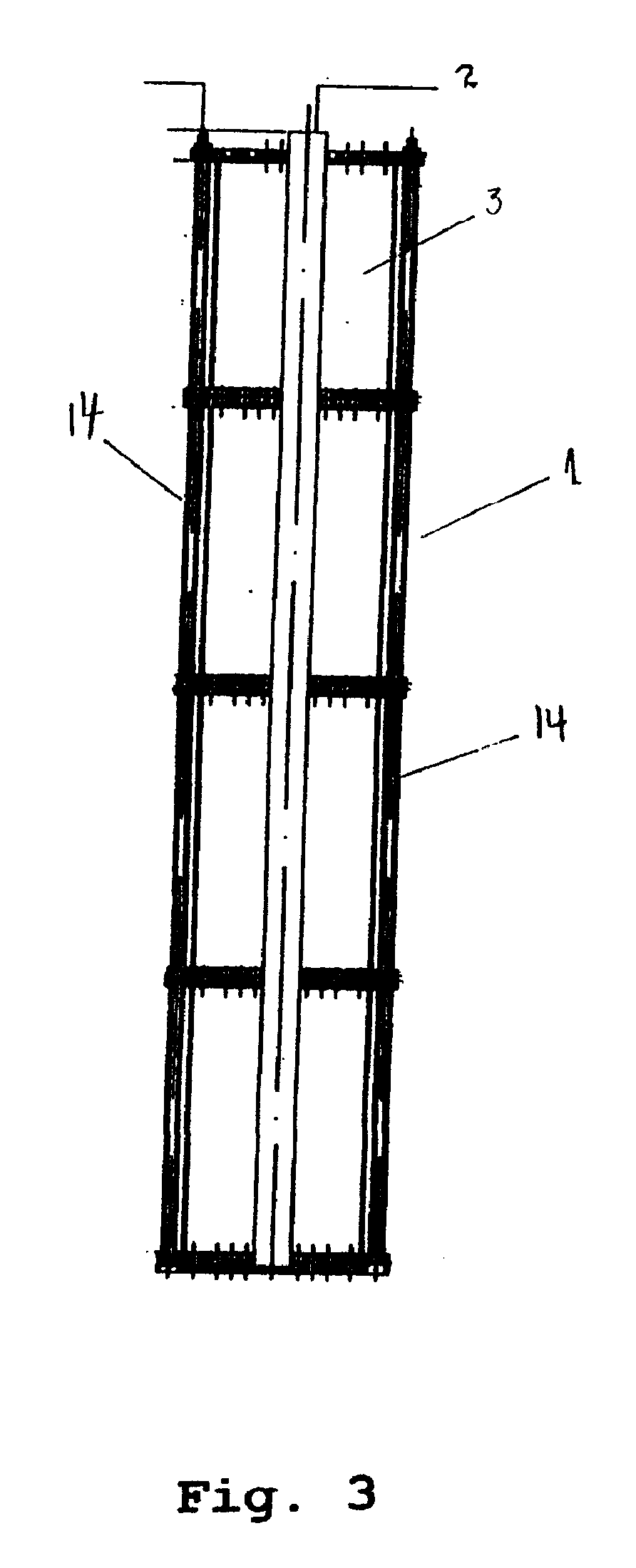Photocatalytic Reactor and Process for Treating Wastewater
a photocatalytic reactor and photocatalytic technology, applied in water/sludge/sewage treatment, water treatment parameter control, specific water treatment objectives, etc., can solve the problems of limited efficiency, complex operation and maintenance, and inefficient filtering, so as to facilitate its assembly and maintenance, facilitate the construction of the reactor, and facilitate the effect of transport and installation
- Summary
- Abstract
- Description
- Claims
- Application Information
AI Technical Summary
Benefits of technology
Problems solved by technology
Method used
Image
Examples
examples
[0109]As an example, a laboratory assay was carried out for the ammonium removal process, using a real sample of water from a trout (Onchorynchus mykiss) culture, from the Centro de Cultivo Piloto de la Universidad Católica de la Santisima Concepción, Chile.
[0110]The water from the culture was filtered at 45 μm and then prepared for the treatment using photocatalysis and the radicals produced by ozone. The pH value was increased to 12 using NaOH and the process was begun. The following corresponds to the obtained result:
AmmoniumTreatmentconcentrationNitriteBacterial loadTOCDQOtime (min)(mg / l)(mg / lt)(U.F.C.)(mg / lt)(mg / lt)02.41.210,3006560100401200.950025Replication02.31.11230060600.9700401200.90027
[0111]The assays show that in two hours, the ammonium removal was 58%. Total disinfection was achieved and the dissolved organic matter was reduced by more than 50%.
PUM
 Login to View More
Login to View More Abstract
Description
Claims
Application Information
 Login to View More
Login to View More - R&D
- Intellectual Property
- Life Sciences
- Materials
- Tech Scout
- Unparalleled Data Quality
- Higher Quality Content
- 60% Fewer Hallucinations
Browse by: Latest US Patents, China's latest patents, Technical Efficacy Thesaurus, Application Domain, Technology Topic, Popular Technical Reports.
© 2025 PatSnap. All rights reserved.Legal|Privacy policy|Modern Slavery Act Transparency Statement|Sitemap|About US| Contact US: help@patsnap.com



